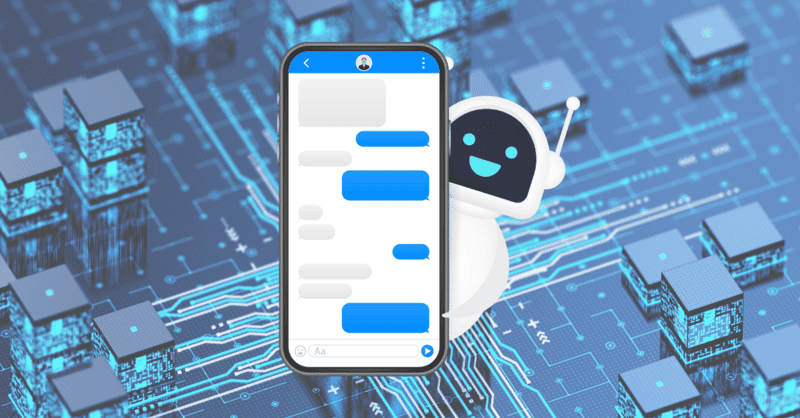
Data protection with website chatbots

'%3e%3cpath%20d='M26.6667%2020.022L30%2023.3553V26.6886H21.6667V36.6886L20%2038.3553L18.3333%2036.6886V26.6886H10V23.3553L13.3333%2020.022V8.35531H11.6667V5.02197H28.3333V8.35531H26.6667V20.022Z'%20fill='%230AA971'/%3e%3c/g%3e%3c/svg%3e) Key findings
Key findings
Chatbots are useful, but they need to be GDPR compliant. Pay attention to three main aspects: Data minimisation, contractual clauses with the provider, and active user consent. This will not only save you time and money but also protect customer data and avoid legal pitfalls.
With the emergence of chatbots and other AI technologies in recent years, it has become increasingly important for businesses to determine how this innovative technology fits within the framework of the GDPR. In particular, the information obligation states that individuals must be informed about the processing of their personal data in a transparent and easily accessible manner. This also applies to chatbots - . However, ensuring that a chatbot complies with the GDPR's information obligation not only ensures compliance, but also builds trust and improves customer satisfaction.
The chatbot
A chatbot is a computer programme that simulates a human conversation. Chatbots are used in many areas, such as online customer service, online dating and online shopping. Many chatbots are designed to mimic human conversation by using natural language processing (NLP). They have become increasingly popular in recent years due to advances in artificial intelligence (AI) and the rise of messaging platforms such as Facebook Messenger, WhatsApp and WeChat.
Chatbots are beneficial because they can save businesses time and money by automating tasks that would otherwise require human interaction. For example, it can be used for customer support and answer questions about a company's products or services.
However, when using chatbots on websites, the following points must be observed in terms of data protection law.
Data protection law
When using a chatbot, it is easy to forget that personal data is still collected and stored. In fact, many companies use chatbots to collect information about their customers' preferences and behaviour. This means that appropriate security measures must be taken to protect this sensitive information.
Data should be encrypted to prevent unauthorised access, and regular updates should be made to ensure that the chatbot's security measures keep pace with new cyber threats, for example.
It is also important to have a robust privacy policy and to ensure that user data is only used for its intended purpose.
If these precautions are not taken, not only is the user's data at risk but the company can also be held liable.
Protecting user data should therefore always be a top priority when implementing a chatbot. The following should be given special attention:
1. The principle of data minimisation
When collecting data via a chatbot, it is important to follow the principle of data economy. This means that only the minimum amount of information that is necessary should be collected. In the case of a chatbot, this can mean asking for a user's name and email address instead of asking for extensive personal data.
The principle of data minimisation is not only in line with the GDPR but also helps to ensure that user's personal data is handled responsibly. By collecting only what is actually needed and discarding unnecessary data, both users and companies themselves can be protected from potential risks.
2. Order processing agreements with the chatbot provider
When using a chatbot and thus a third-party provider, it is important to ensure that all parties involved comply with their data protection obligations. An order processing agreement with the chatbot developer should define the responsibilities of both parties and it should be clear what personal data will be collected and how it will be processed. Without such a contract, there may be ambiguity or misunderstanding about who is responsible for data protection compliance. The contract also serves as documentation in case of an audit or investigation.
In short, concluding an order processing agreement contract with the developer helps to meet data protection requirements and protect all parties involved - besides, such a contract is mandatory anyway.
It should also specify how long the data will be stored and how it will be deleted when it is no longer needed. Finally, the contracts should also address liability issues in case something goes wrong with the chatbot or the data it collects.
3. Active consent
When it comes to personal data, it is important to understand who has access to that data and for what reason. Active consent at this point means that the data subject must actively choose to consent to the use of their data, whether by ticking a box or signing a form. This ensures that the individual knows and has control over how their data is used.
Without active consent, companies (or individuals) can misuse people's personal data without their knowledge - consent also sets a clear limit on what can and cannot be done with a person's data, protecting them from possible harm or breaches of their privacy. It helps to empower individuals and promote their accountability.
Do you have questions about how to create a GDPR-compliant consent text? heyData can help!
Summary
There are three important points to consider when using chatbots on websites: Data Protection, Contract Negotiation, and Liability. If you take these points into account, your company can use chatbots safely and reliably.


